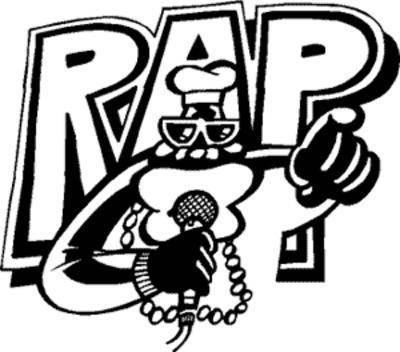Welcome to our weekly series The Language of the Blues, in which author and rock musician Debra Devi explores the meaning of a word or phrase found in the blues.
Grab a signed copy of Devi’s entertaining award-winning glossary The Language of the Blues: From Alcorub to Zuzu (Foreword by Dr. John) at Bluescentric.com. Also available as an eBook.
Since the 1700s, to rap has meant to con, fool, or win a game of wordplay in the Krio (Creole) dialect of Sierra Leone, which is on the west coast of Africa. By the 1870s, “to rap” was in use in the United States, where it meant to converse, tease, or taunt. It also meant to steal a purse. By 1916 a police informant or witness to a crime was called a “rapper” and a “rap” was an arrest or criminal conviction. A “rap sheet” was a list of a criminal’s convictions.

Rapping about one’s accomplishments–criminal or otherwise–dates “all the way back to the motherland, where tribes would use the call-and-response chants,” according to hip-hop godfather Afrika Bambaataa. “In the 1930s you had Cab Calloway pioneering his style of jazz rhyming,” Bambaata explained in the 1993 book Droppin Science: Critical Essays on Rap Music and Hip Hop Culture. “In the 1960s,” Bambaata added, “you had the love style of rapping, with Isaac Hayes, Barry White, and the poetry style of rapping with The Last Poets, The Watts Poets, and the militant style of rapping with brothers like Malcolm X and Minister Louis Farrakhan. In the sixties you also had ‘The Name Game,’ a funny rap by Shirley Ellis, and radio DJs who would rhyme and rap before a song came on.”
By 1971, party DJs like Kool Herc were rapping over vinyl as they spun it, manipulating the vinyl itself with scratching and other techniques to create a new sound called hip-hop. Russell Simmons was a sociology student at the City University of New York when he heard his first rapper in 1977–Eddie Cheeba at the Charles Gallery on 125th Street. Simmons and his younger brother Joey, who became Run of the rap group Run DMC, started promoting rap shows on campus. Simmons named his promotion venture “Rush” after his teenage nickname.
In 1979, Ford, Simmons and a friend wrote “Christmas Rappin’” for rapper Kurtis Blow, whom Simmons was managing. The song was a club hit, and Mercury Records began distributing the single to record stores around the country. This was the first rap single to be distributed by a major record company, but much like “race records” sixty years earlier, rap records were considered a passing fad by most people…except Simmons. While still in school, he put most of his energy into promoting hip hop records and concerts.
In 1983, Simmons befriended Rick Rubin, another rap-obsessed student promoter. Rubin was a white, longhaired, bearded former heavy metal fan, who lived in dark wraparound shades and a black overcoat. He had released a local dance hit by T La Rock and Jazzy Jay called “It’s Yours” from his dorm room at New York University that was one of Simmons’ favorite records.
Simmons and Rubin formed Def Jam Records with $5,000.00 and put out a single by an unknown fifteen-year-old rapper named LL Cool J. While Rubin concentrated on producing the music, Simmons worked on getting LL Cool J out of his favorite cowboy boots and into the Kangol hat and sneakers that were
to become his trademark. The single sold 50,000 copies. By the following year Def Jam had sold more than 300,000 units of seven different twelve-inch singles.
Their success attracted CBS Records, which offered to help them promote and market four new acts a year. In two years with CBS, Def Jam scored three monster hits: the first crossover rap/rock single, “Walk This Way,” with Run DMC and Aerosmith; LL Cool J’s two-million-seller Bigger and Deffer; and the Beastie Boys’ quadruple platinum album Licensed to Ill.
Simmons accomplished this because he didn’t assume that only African Americans would be interested in hip hop. Just as W.C. Handy had marketed the blues to whites in the early 1900s, Simmons marketed rap to both African-American and white audiences. “We don’t make records, music, or television for black people, but for people who consume black culture,” Simmons said in a Worth magazine interview in 1992.
Like the blues, rap has been criticized from within its own community for violent imagery, crude language and misogynistic lyrics. Like the blues, rap has lifted some artists out of poverty and has given them major careers and legendary status. And, like the blues, rap is an art form that accurately reports on the struggles, strategies and subterfuges of the ghetto, with fortitude of heart and soul that touches people of all races from Tuscaloosa to Tokyo.
Songs:
“Big Leg Emma’s”- Champion Jack Dupree
“Long John Dean, the Bold Banker Robber from Bowling Green”
– W.C. Handy
“Pinetop’s Boogie Woogie”- Pinetop Smith
Video:
Preacher’s Delight

